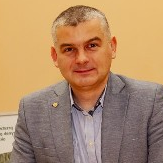Contemporary Challenges of Agriculture and Rural Areas in the Context of Sustainable Development
A special issue of Agriculture (ISSN 2077-0472). This special issue belongs to the section "Agricultural Economics, Policies and Rural Management".
Deadline for manuscript submissions: closed (15 March 2021) | Viewed by 161566
Special Issue Editor
Interests: sustainable development; sustainable development of rural areas and agriculture; education for sustainable development; rural advisory services; agricultural knowledge and innovation systems (AKIS); diffusion and adoption of innovations in rural areas; multifunctional development of rural areas; entrepreneurship; non-agricultural entrepreneurship in rural areas; horizontal and vertical integration in the food sector and agriculture; formation and operation of agricultural producer groups
Special Issues, Collections and Topics in MDPI journals
Special Issue Information
Dear Colleagues,
The image of world agriculture and rural areas is constantly changing. These changes are influenced, among others, by social expectations and policies of individual governments, which in many cases declare support for sustainable development of agriculture and rural areas. Regardless of the global downward trend of the share of agriculture in the creation of gross domestic product and employment, its role does not weaken, while its functions are changing. In addition to production functions, more and more attention is paid to the importance of agriculture in preserving environmental values, which is part of the concept of sustainable development.
Sustainable agriculture combines economic goals with environmental requirements through the management of production processes and the efficient use of natural resources in such a way as to meet the needs of farm owners and their families, consumers of food and other agricultural products, while maintaining the high quality of the natural environment and protecting its resources. Agricultural production in accordance with the principles of sustainable development requires farm owners to meet several criteria. It is connected with the need to maintain, as per the general theory of sustainable development, the right proportions between all aspects of life and with the need for harmonious balancing of economic development with social and ecological, which is not always an easy and simple task to fulfill. On the one hand, agricultural activity aims to meet the needs of farm owners and their families, must also accumulate the funds to restore production, and allow for further economic development. On the other hand, however, due to the close connection of a farm with the surrounding natural environment, the production taking place in it must be carried out in such a way that the environmental requirements are respected. Often, agricultural producers face the dilemma of choosing to achieve their economic goals at the expense of environmental requirements. The future of rural areas depends, to a large extent, on their decisions. The basis for making optimal decisions in the process of managing a farm should be current theoretical and application knowledge—including methods, technics, and tools used in the sustainable management of a farm.
However, it is important to remember that rural areas are more than just agriculture. Increasingly, they are also a place of residence for the non-agricultural population. In many countries, it can be seen that rural areas are increasingly taking on many non-agricultural functions. Various types of manufacturing and processing plants are located there, they are a place of residence, as well as rest and recreation, etc. The harmonious development of rural areas is a huge challenge facing the world today. Therefore, the purpose of this Special Issue of Agriculture is to provoke a scientific discussion on the contemporary challenges facing agriculture and rural areas today and in the near future. The collected articles will constitute a compendium of knowledge and will propose practical solutions to the burning problems that are currently facing both agriculture and rural areas in general.
Prof. Dr. Piotr Prus
Guest Editor
Manuscript Submission Information
Manuscripts should be submitted online at www.mdpi.com by registering and logging in to this website. Once you are registered, click here to go to the submission form. Manuscripts can be submitted until the deadline. All submissions that pass pre-check are peer-reviewed. Accepted papers will be published continuously in the journal (as soon as accepted) and will be listed together on the special issue website. Research articles, review articles as well as short communications are invited. For planned papers, a title and short abstract (about 100 words) can be sent to the Editorial Office for announcement on this website.
Submitted manuscripts should not have been published previously, nor be under consideration for publication elsewhere (except conference proceedings papers). All manuscripts are thoroughly refereed through a single-blind peer-review process. A guide for authors and other relevant information for submission of manuscripts is available on the Instructions for Authors page. Agriculture is an international peer-reviewed open access monthly journal published by MDPI.
Please visit the Instructions for Authors page before submitting a manuscript. The Article Processing Charge (APC) for publication in this open access journal is 2600 CHF (Swiss Francs). Submitted papers should be well formatted and use good English. Authors may use MDPI's English editing service prior to publication or during author revisions.
Keywords
- Sustainable agricultural production
- Sustainable cultivation techniques and technologies
- Sustainable breeding and livestock welfare
- Challenges of agriculture in the face of climate change
- Impact of subsidies on the development of agriculture and rural areas
- The role of agricultural advisory services in the development of agriculture and rural areas
- Multifunctional development of rural areas
- Non-agricultural functions of rural areas
- Social development of rural areas
- Reduction of poverty and social exclusion in rural areas
- Agricultural markets
- Agricultural policy
- Agri-food trade and international agri-food markets
- Consumer behavior changes affecting the directions of agricultural production
- Sustainable agricultural logistics
- Farmland price
- Food security and food safety
- Employment and unemployment issues in rural areas





